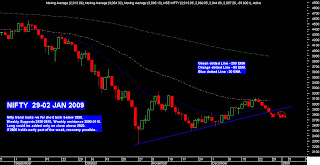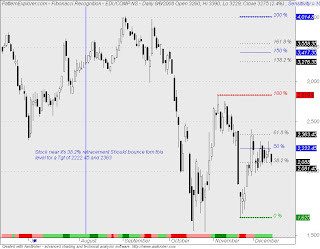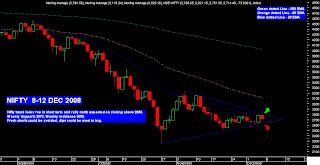Can Stayam Computer be a takeover candidate?
The exodus of the independent directors has begun and there is news that even the employees in the senior and middle rung are busy circulating their resumes. The all important Board meeting is scheduled for 10th Jan 09’ and major decisions, mainly in the form of complete management reshuffle and probably Raju resigning is expected to keep all on tenterhooks. That is assuming that some PE fund or IT major like IBM or Accenture or Cap Gemini does not make a bid to takeover before 10th Jan.
Satyam is indeed the best takeover target right now. Any company looking for value need not look too far beyond. Corporate governance apart, Satyam is an ace IT player, not just in India but has deep trenched global footprints too. Satyam offers a variety of services from application development and maintenance to infrastructure management. India is a growing market and will add millions of internet and IT users within the next few years. The opportunity for tech companies in India is immense. An acquisition by a global company would mean it can increase its immense market share in Indian IT market as this is an opportune time to get a foothold.
If one removes all this shroud of shame surrounding the company, Satyam is actually a very good catch. The company, had a consolidated net profit of Rs 580.85 crore for the second quarter ended September 30, a growth of 42 per cent over the corresponding period a year ago. Total revenue earned was up 35% at Rs. 2,898.87 crore. For the fiscal 2008-09, the company has revised its guidance upwards and stated that its consolidated revenue was to be between Rs 11,273 crore and Rs 11,475 crore, implying a growth rate of 33.0 % to 35.4 % over fiscal 2008. EPS for the full year is expected to be between Rs. 33.57 to Rs. 34.10, implying a growth rate of 33.0 % to 35.1 %.
54% of its business now comes from offshore and 46% from onsite business. 62% of its revenue comes from USA, 21% from Europe and another 17% from rest of the world. Its subsidiaries includes Satyam BPO, Citisoft , CA Satyam , STI , Satyam in China and Bridge Consultancy. So we are basically looking at a US$2 billion company up for sale. Also, the good news is that more number of employees work offshore, almost 70% of the total workforce, than onsite. It currently has 690 customers, of which, 185 are Fortune 500 companies. But how many would renew their contracts after this would depend on how the company handles this situation. And given the fast image rescuing it would have to do, the beating down of the stock price makes it an excellent buy.
Also, the promoters might not have too much of a say in the matter now as they just not have enough shares to have any controlling stake. Raju family’s stake is now stated to have slipped below 5% after the shares pledged by the promoters was sold by the lenders. With margin calls coming in, the lenders would have had no option but to sell to cover the shortfall.
Satyam is sure to take a further beating on its image but its only way out now is through a strategic partner coming in or a takeover happening. The company, as a pure IT company, is a gold mine and would surely help escalate the standing of any company taking over. This is only silver lining in this otherwise bleak cloud.







